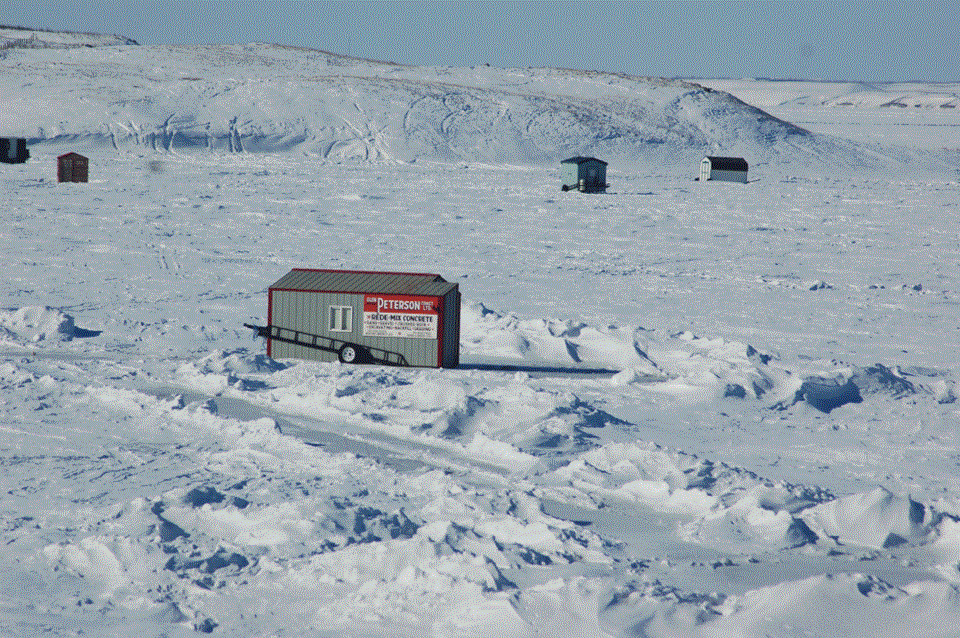When the temperature drops in the winter, many anticipate a trip out onto the lake to indulge in some ice fishing. This winter, though, that has been a little more difficult with the fluctuations in temperature and the dangerous variability in the thickness of ice.
“The ice conditions this year, from our perspective, could create some hazards,” said Darby Semeniuk, manager of communications services with the Ministry of Environment. “There have already been a couple of incidents this year.”
Estevan fire Chief Dale Feser said he is aware of a reduced number of people participating in ice fishing, in the Estevan area, this year. He also noted he hasn’t heard of anyone falling through the ice in the area.
“However, I have come across Facebook posts that show right around the Yankee Point area, (the ice) is starting to lose its integrity, and some fishing shacks are starting to sink a bit,” said Feser.
In its 2015 Angler’s Guide, the Ministry of Environment recommends numerous precautions and steps to keep safe, when ice fishing. These include letting someone know about any plans to go ice fishing, to not fish alone and testing the thickness of the ice before going onto it.
The guide also states that ice doesn’t freeze at a uniform thickness, and because of that, its strength can vary from one area to another. Factors like water currents, pressure cracks, springs, old holes and heavy snow insulation can all have an influence on how thick the ice is.
Feser recommended staying off ice that’s less than two inches thick or less.
“With ice that’s two inches or thinner, you don’t know what type of ice is present,” said Feser. “Whether it’s rotting ice or with heated thermal currents in the water itself that may be degrading the ice below the surface.”
Feser said that a minimum thickness of four inches is required for ice fishing; five inches of ice thickness is necessary for snowmobiles or ATVs; eight to 12 inches of ice thickness is necessary for a small car or pickup truck and 12 to 15 inches of ice thickness is needed to accommodate the weight of a medium-sized truck.
The Angler’s Guide noted reedy areas tend to have weaker ice. Colour is also an indicator of the thickness of ice, with blue indicating thicker ice and white or opaque ice being weaker, since it contains a mixture of bubbles and snow.
“There could be a void space or gap due to water releases, so when the temperature starts to climb, you’ll actually see a sagging of the ice surface,” said Feser. “That’s an indication that you want to get the heck off the ice surface as soon as possible. Definitely exercise extreme caution. Take a look and try to read the ice surface before venturing off out there.”




